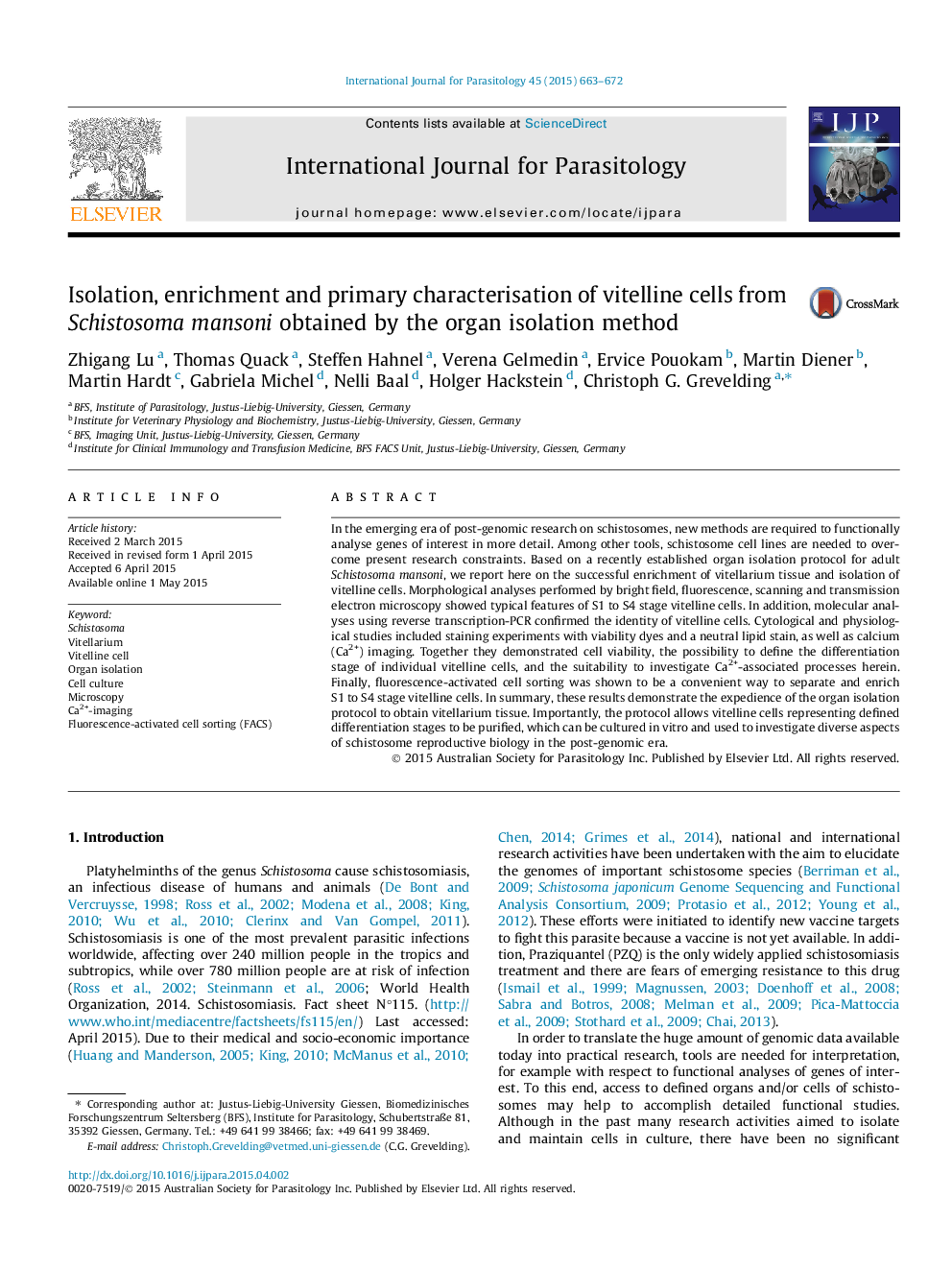| Article ID | Journal | Published Year | Pages | File Type |
|---|---|---|---|---|
| 2436020 | International Journal for Parasitology | 2015 | 10 Pages |
•Vitellarium tissue and vitelline cells can be isolated from female Schistosoma mansoni.•Microscopical analyses show typical features of differentiating vitelline cells.•Molecular studies confirm vitelline cell identity.•Cytological and physiological studies demonstrate vitelline cell viability.•Fluorescence-activated cell sorting allows separation and enrichment of differentiating vitelline cells.
In the emerging era of post-genomic research on schistosomes, new methods are required to functionally analyse genes of interest in more detail. Among other tools, schistosome cell lines are needed to overcome present research constraints. Based on a recently established organ isolation protocol for adult Schistosoma mansoni, we report here on the successful enrichment of vitellarium tissue and isolation of vitelline cells. Morphological analyses performed by bright field, fluorescence, scanning and transmission electron microscopy showed typical features of S1 to S4 stage vitelline cells. In addition, molecular analyses using reverse transcription-PCR confirmed the identity of vitelline cells. Cytological and physiological studies included staining experiments with viability dyes and a neutral lipid stain, as well as calcium (Ca2+) imaging. Together they demonstrated cell viability, the possibility to define the differentiation stage of individual vitelline cells, and the suitability to investigate Ca2+-associated processes herein. Finally, fluorescence-activated cell sorting was shown to be a convenient way to separate and enrich S1 to S4 stage vitelline cells. In summary, these results demonstrate the expedience of the organ isolation protocol to obtain vitellarium tissue. Importantly, the protocol allows vitelline cells representing defined differentiation stages to be purified, which can be cultured in vitro and used to investigate diverse aspects of schistosome reproductive biology in the post-genomic era.
Graphical abstractFigure optionsDownload full-size imageDownload high-quality image (119 K)Download as PowerPoint slide
